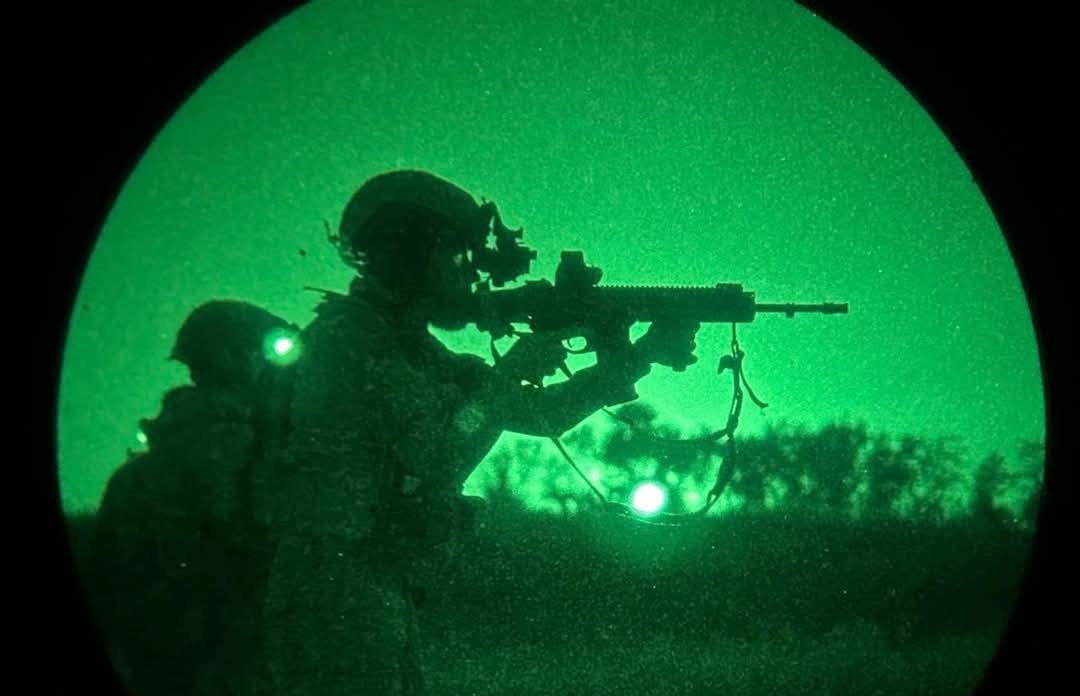Despite heavy losses in 2024, Russian forces have adapted their capabilities and may sustain offensive operations for at least another year. According to the International Institute for Strategic Studies (IISS), as of early January 2025, Russia has lost 172,000 troops killed since the start of its all-out war against Ukraine in 2022. Additionally, 611,000 soldiers have been wounded, with 376,000 sustaining severe injuries leading to permanent disability and discharge from military service. The remaining 235,000 have recovered and returned to combat.
Kyiv contained Moscow's advances and inflicted heavy losses on the invaders in 2024
The IISS's annual Military Balance 2025 report says Ukraine's frontline situation is not as dire as it was in early 2024. However, Kyiv will still require Western support and improved manpower management to avoid further battlefield setbacks.
While 2024 was a challenging year for Ukraine, its armed forces managed to limit Russian territorial advances and inflict heavy losses. These results indicate that Russia’s battlefield gains are far from decisive, the IISS notes.
Ukraine’s military is not facing a critical equipment shortage at the moment. However, it will likely need significantly more weapons, particularly advanced Western systems, to reliably repel Russian offensives.
Conducting major counteroffensive operations to liberate occupied territories would require far greater material resources. Analysts warn that any reduction or halt in Western support would severely worsen Ukraine's situation in the medium term.
Ukraine's defense industry gains momentum, but manpower challenges persist
Ukraine is starting to see the first results of joint ventures and partnerships between its defense sector and Western arms manufacturers. These efforts are expected to gain momentum in 2025. Additionally, Ukraine’s domestic defense industry has adapted, mass-producing key equipment such as the Bohdana 2S22 self-propelled howitzer at a rate of 16 units per month. These systems are already in service with various units of the Ukrainian Ground Forces, National Guard, and Marines.
However, manpower management remains one of Ukraine’s biggest challenges. Several newly formed brigades, such as the 152nd Jaeger and 155th Mechanized Brigades, experienced chaotic formation processes.
Entire battalions were reassigned to reinforce depleted frontline units, leading to prolonged integration periods and inadequate training. Some of these new brigades, like the 150th Mechanized Brigade, were deployed to the most intense battle zones and suffered heavy losses.
Ukraine’s command structure above the brigade level remains temporary, making coordination between brigades uneven and, in some cases, creating vulnerabilities along the front. Infantry battalions are particularly strained, with reports indicating personnel levels as low as 20–30% of their authorized strength. Experienced soldiers are in short supply, facing increasingly skilled Russian drone operators and artillery crews.
These leadership and manpower issues have been cited as a major obstacle to voluntary enlistment. Ukraine’s most elite and prestigious units have been recruiting directly and have faced fewer personnel shortages.
If Ukraine can address these challenges, it could significantly strengthen its military effectiveness. The country still has a sizable pool of untapped manpower—enough to replenish its depleted units. Estimates suggest Ukraine requires an additional 50,000 to 100,000 troops. Recent government appointments and proposed reforms aim to tackle these issues.
Russia replenishes heavy equipment losses but faces long-term sustainability issues
Meanwhile, IISS estimates that in 2024 alone, Russia lost around 1,400 main battle tanks and over 3,700 infantry fighting vehicles and armored personnel carriers. Since 2022, Russia has lost nearly 14,000 of them. However, Moscow has managed to replenish some of these losses using its stockpiles of Soviet-era equipment.
The IISS estimates that in 2024, Russia repaired or produced over 1,500 main battle tanks and about 2,800 infantry fighting vehicles and armored personnel carriers. By the end of the year, Military Balance+ data indicated that Russia’s active vehicle count had only just returned to February 2022 levels. The expansion of Russian military units has exacerbated equipment shortages, with quality and spare parts availability also becoming issues.
As of late December 2024, analysts estimate that Russia has up to 617,000 personnel deployed in or near Ukraine, including wounded soldiers recovering and troops in training. Ukraine’s military intelligence agency has assessed Russia’s ground force strength at 470,000 troops, with an additional 33,000 Russian National Guard personnel—excluding air and naval forces.
However, the IISS figures on Russian vehicle losses differ significantly from those reported by Ukraine’s General Staff, as per Defense Express. Kyiv’s official figures claim that Russia lost 29,698 armored vehicles from February 2022 to the end of 2024—almost double the IISS estimate. In 2024 alone, Ukraine reported destroying 3,685 tanks and 8,943 armored vehicles. The difference likely arises from different methods of classifying damaged versus permanently lost equipment.
Analysts stress that Russia’s reliance on aging armor may lead to further logistical challenges, as degraded equipment will be harder to maintain and sustain in combat.
While Russian forces are expected to degrade further in the coming months, they have been sufficiently restored to conduct operations over the next 12 months. Ukraine’s situation is not as dire as it was in early 2024, but it will continue to rely on Western support and improved manpower management to prevent further battlefield setbacks.
Related:
- Ukraine’s General Staff: Russia’s tank losses exceed 10,000
- The Insider: As Russia depletes Soviet tanks and artillery, Putin’s Ukraine war drive to end by 2026
- ISW: Russian advances slow despite maintaining high casualty rates
- Russia’s January losses reach over 48,000 soldiers, second-highest since 2022
- Russia caught presenting own Kursk losses as Ukrainian defeats, OSINT analysis shows
- Forbes: Civilian vehicles replace armored carriers in Russian assaults
- Forbes: Russian army deploys 1950s-era BTR-50s as newer vehicles become scarce





